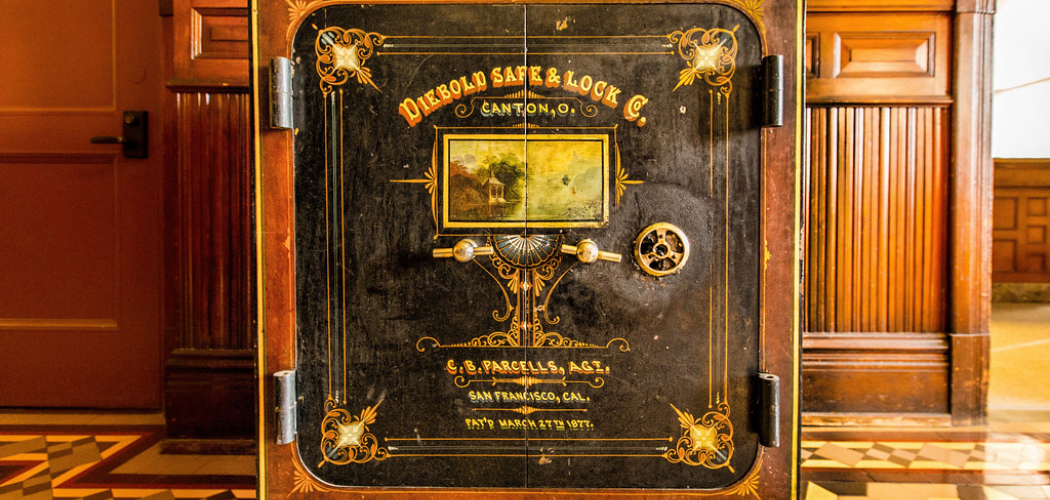When faced with the issue of how to get rid of an old safe, it is crucial to consider responsible disposal or repurposing methods.
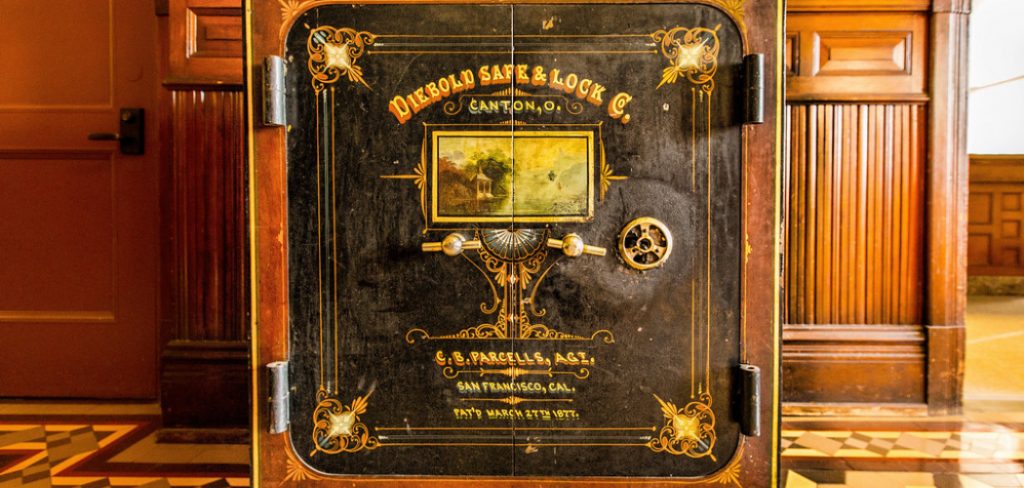
Disposing of a safe in an environmentally friendly manner ensures that heavy metals and other potentially hazardous materials do not cause harm.
Several options for removing an old safe are available, including selling, donating, recycling, or even hiring professional removal services. Each method has its own set of benefits and considerations, making it essential to choose the most suitable one based on the specific condition and value of your safe.
Additionally, practicing environmentally responsible disposal methods helps reduce waste and ensures compliance with local regulations, thereby avoiding potential fines or penalties. Taking these steps ensures that the process of getting rid of an old safe is handled most efficiently and ethically.
Assessing the Condition and Value of the Safe
Evaluating the Safe’s Condition
Before deciding how to get rid of an old safe, it is important to evaluate its current condition. Begin by checking the functionality of the locking mechanism and ensuring that the structural integrity remains intact.
Look for any signs of rust, corrosion, or physical damage that could compromise the safe’s security features. Additionally, identify any potential hazards, such as sharp edges or chemical residues, that might require special handling.
This initial assessment will help determine the most appropriate method of disposal or repurposing, ensuring safety and compliance with disposal guidelines.
Determining the Safe’s Value
Once the condition has been assessed, the next step is determining the safe’s value. Check if the safe has any resale or scrap value by researching similar models online or consulting with resale platforms.
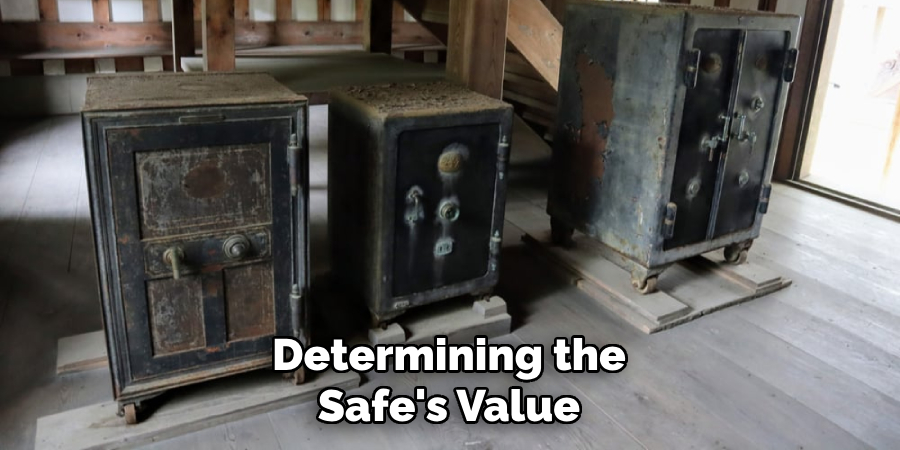
If the safe is antique or high-end, it may be worth consulting a professional appraiser to get an accurate valuation. This will help you decide whether to sell, recycle, or discard the safe.
Knowing the value can also provide insight into the safest and most profitable disposal options available, ensuring you make an informed decision.
How to Get Rid of An Old Safe: Selling or Donating the Safe
Selling the Safe
One of the viable options for getting rid of an old safe is selling it. Various platforms can facilitate this process, including online marketplaces such as eBay, Craigslist, and Facebook Marketplace, as well as local classifieds in community newspapers and bulletin boards.
When listing the safe for sale, capturing high-quality photos from multiple angles is crucial. These images should highlight both the interior and exterior of the safe, showcasing its condition and any unique features it may have.
In the description, provide detailed information about the safe’s dimensions, brand, model, and condition, along with any history of whether it’s an antique or high-end model.
Pricing should reflect the safe’s current condition and market value; researching similar listings can help you set a competitive price. A well-crafted listing not only attracts potential buyers but also ensures a smoother and quicker sale process.
Donating the Safe
If selling the safe is not a suitable option, donating it can be an excellent alternative. Many organizations, including schools, non-profits, community centers, and even local fire departments, might welcome the donation of a safe.
Begin by identifying organizations in your area that might have a use for a safe. Contact these organizations to confirm their acceptance criteria and any specific needs they might have.
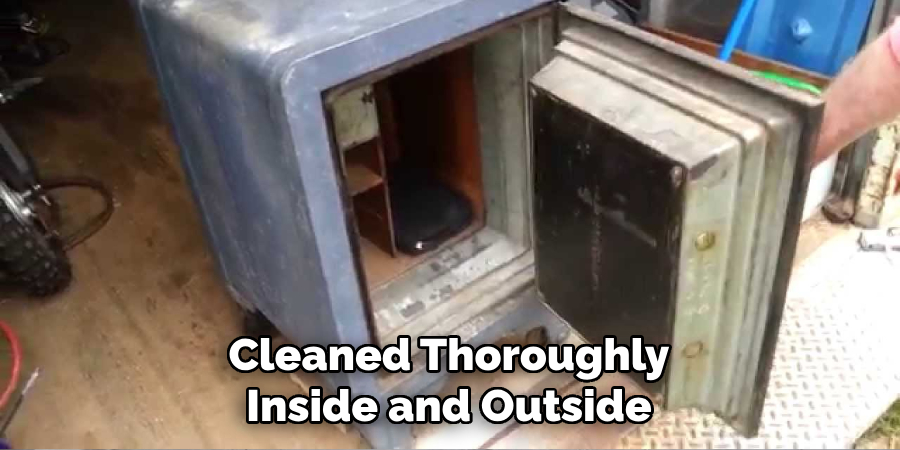
Before donating, ensure the safe is cleaned thoroughly inside and out, making it presentable and sanitary for its new home. Additionally, it is essential to ensure the safe is unlocked and accessible, providing any necessary keys or combinations.
Preparing the safe properly not only increases its chances of being accepted but also ensures that the organization does not encounter any issues while placing it into use. Donating a safe offers the added benefit of helping a community entity, giving your old safe a new purpose.
How to Get Rid of An Old Safe: Recycling and Scrapping Options
Recycling the Safe
Recycling is a responsible and environmentally friendly way to get rid of an old safe. The first step is to locate local recycling centers that accept metal items, including safes.
Many municipalities offer recycling programs or have dedicated facilities for metal recycling. Contact these centers to confirm they accept safes and to understand their specific requirements.
Once a suitable recycling center is identified, the next step is to prepare the safe for recycling. This involves disassembling the safe and removing any non-metal components, such as plastic or electronic parts, which could interfere with the recycling process.
Begin by emptying the safe and ensuring it is free of hazardous materials. Use appropriate tools to carefully dismantle the safe, ensuring the preservation of the metal parts for recycling.
Proper preparation not only ensures compliance with recycling center guidelines but also makes the process smoother and more efficient.
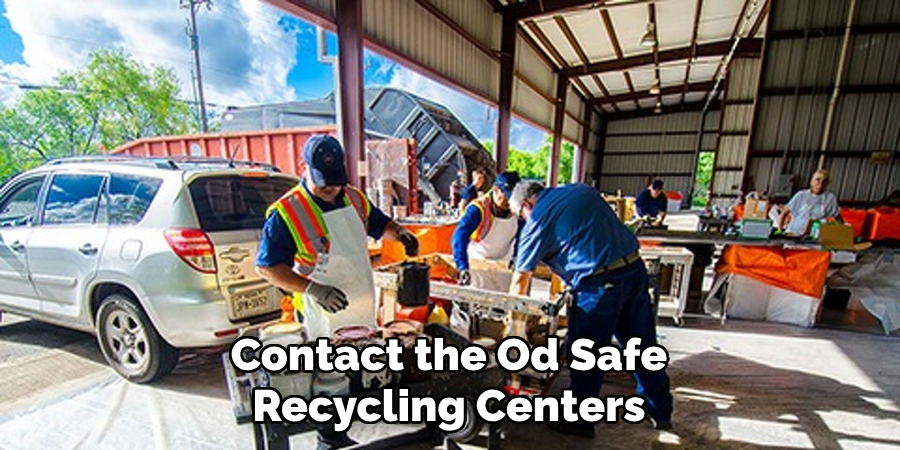
Scrapping the Safe
Scrapping is another viable option for removing an old safe, particularly if it has a high metal content.
Start by contacting local scrap yards to inquire about their metal recycling services and to confirm they accept safes. Many scrap yards have specific protocols for scrapping large metal objects, so understanding these requirements is crucial.
Upon confirmation, transport the safe to the scrap yard, ensuring it is disassembled as needed to comply with their guidelines.
The scrapping process typically involves weighing the metal to determine its value, with a monetary return based on the current market price for scrap metal.
Different types of metal found in safes, such as steel or iron, may vary in value, so separating these components is beneficial if possible. Scrapping the safe not only provides an eco-friendly disposal method but can also offer a potential financial return, making it a practical option for many.
Professional Removal Services
Hiring a Removal Service
For many individuals, hiring a professional removal service is the most convenient and hassle-free option for getting rid of an old safe.
These services are well-equipped to handle the heavy lifting and transportation requirements, ensuring that the safe is removed from your property safely and efficiently.
When choosing a reputable service provider, start by researching local companies that specialize in safe removal and disposal. Check for customer reviews, ratings, and testimonials to gauge their reliability and quality of service.
Additionally, verify that the company is licensed and insured to protect yourself against any potential liabilities during the removal process.
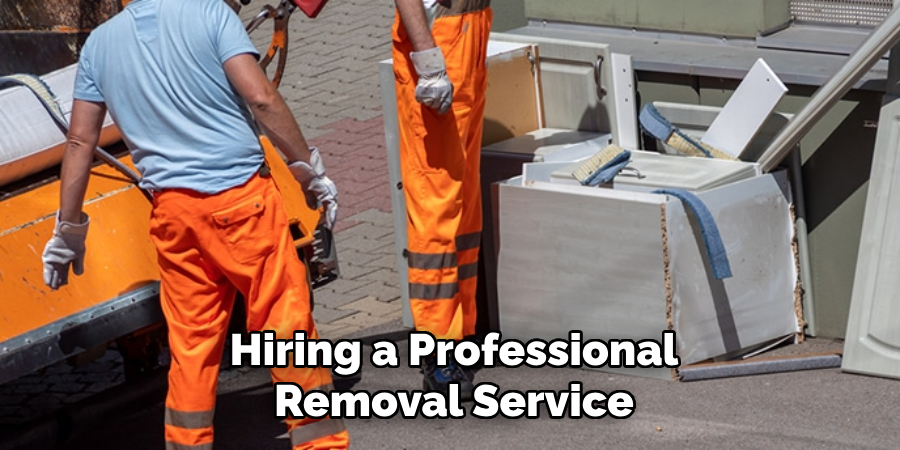
Cost and Considerations
The cost of hiring a professional removal service can vary based on the size and weight of the safe, as well as the complexity of the removal process.
Typical costs range from $100 to $500, with additional fees possibly incurred for difficult-to-access locations or extra manpower. When obtaining quotes, ensure the service provider follows proper disposal guidelines, including recycling and scrapping where possible.
Confirm that the removal service disposes of the safe in an environmentally responsible manner by asking about their disposal practices and any partnerships with recycling centers or scrap yards. This ensures compliance with environmental regulations and supports sustainable practices.
DIY Disposal Methods
Disassembling the Safe
Disassembling a safe can be a practical DIY approach for those comfortable with using tools and handling heavy objects. The first step is to gather the necessary tools, which typically include a wrench, screwdriver, hammer, and possibly a crowbar.
Begin by ensuring the safe is completely empty and free of any personal items. Remove any internal shelving or drawers if possible.
To start disassembling, open the safe door and locate the hinges, bolts, or screws that hold it in place. Unscrew or unbolt these components to detach the door. With the door removed, proceed to dismantle the main body of the safe.
Be mindful that some safes may have reinforced steel panels or electronic parts that require extra care. Safety precautions are paramount during disassembly.
Wear heavy-duty gloves to protect your hands and safety goggles to shield your eyes from potential debris. Work in a well-ventilated area with ample space to manage the disassembled parts. If the safe is particularly heavy, consider enlisting the help of another person to stabilize the safe and prevent injury.
Transporting the Safe
Once the safe is disassembled, the next task is transporting the components to a disposal or recycling site. Use a dolly or hand truck to move the heavier parts to avoid injury or damage. Ensure the path to the transport vehicle is clear of obstacles and that you have enough space to maneuver.
Secure the safe parts tightly in the vehicle to prevent movement during transit. Use straps or bungee cords to immobilize the heavy components and wrap sharp edges with protective material to avoid damage.
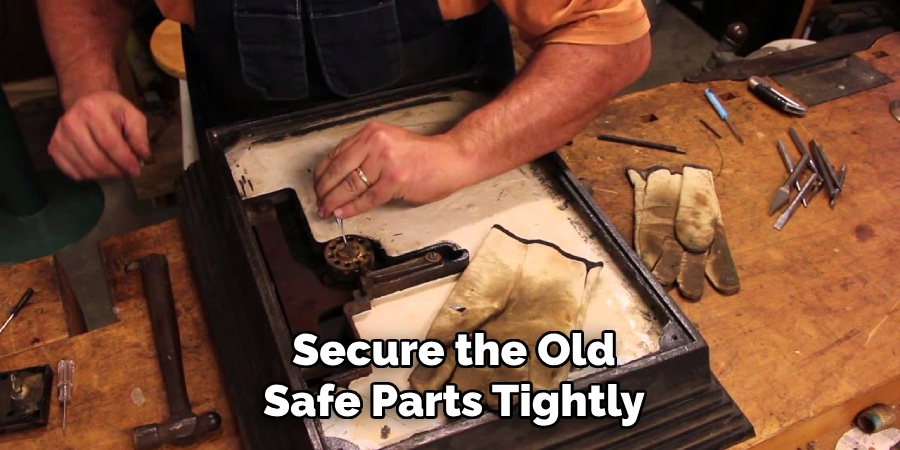
Carefully consider the weight distribution within the vehicle to maintain balance and prevent tipping. Drive cautiously, especially if transporting heavy or unwieldy items.
If transporting the safe on your own seems daunting, consider hiring a rental service with a lifting gate to facilitate easier loading and unloading. Following these tips will help ensure a safe, secure, and efficient disposal process.
Legal and Environmental Considerations
Understanding Local Regulations
Proper disposal of large metal items, such as safes, requires a thorough understanding of local regulations. Many municipalities have specific guidelines for disposing of bulky and hazardous materials, ensuring they do not end up in landfills where they can cause environmental harm.
It is crucial to check with local councils or waste management authorities to determine the appropriate procedures and required permits.
Importance of Environmentally Responsible Disposal
Environmentally responsible disposal methods help minimize the ecological impact. Recycling and scrapping are preferable options as they allow for the recovery and reuse of valuable metals, reducing the need for new resource extraction.
Ensuring that your disposal methods align with environmental guidelines contributes to sustainability efforts and helps protect natural resources.
Potential Fines or Penalties
Improper disposal of large metal objects can result in significant fines or penalties. Regulations often enforce strict compliance to prevent illegal dumping and contamination.
By adhering to approved disposal methods, individuals and businesses can avoid legal repercussions and contribute to community health and safety.
Conclusion
In summary, there are several effective methods for learning how to get rid of an old safe. Professional removal services offer a hassle-free and reliable option, ensuring safe transportation and proper disposal.
DIY methods, such as disassembling and transporting the safe components yourself, can be cost-effective and practical for those with the right tools and skills.
Choosing the most appropriate and responsible method tailored to your situation is crucial. Additionally, always consider the environmental impact and prioritize recycling and sustainable disposal practices to minimize ecological harm.
By adhering to safety protocols and legal regulations, you can ensure a smooth, compliant, and eco-friendly disposal process for your old safe.

